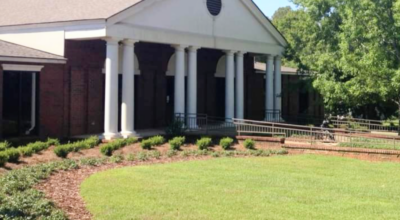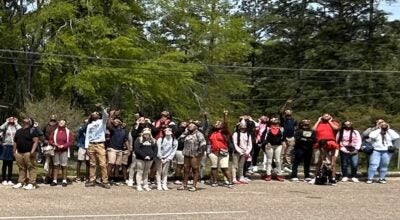Hands-on history in Honoraville
Published 4:32 pm Monday, April 26, 2010
Cannon fire was heard Sunday afternoon in Honoraville, as ladies in crinolines and fellows with sabers and pistols roamed the grounds.
Members and guests of the Butler County Historical and Genealogical Society (BCHGS) gathered at the home of Gerald and April McGough for a second time in two years. This year, the McGoughs offered even more hands-on history for the attendees, re-visiting the Civil War period and the pioneer days of the chuck wagon and cattle drives.
Margaret McGough, along with sister-in-law April, was dressed in antebellum costume. The Civil War enthusiast shared details of what a chore it was for ladies to get dressed in the 1860s.
“Here’s Victoria’s real secret,” she said, holding up a pair of pantaloons which were open in the center.
“If you have wondered how ladies managed to answer a call of nature with all those clothes on, this is how they did it.”
“Drawers” were just the start of a lady’s attire. A young volunteer proceeded to don a chemise, a slip-like garment, and then endured being partially harnessed in a corset (“You needed servants as you couldn’t do this by yourself”), which hooked in the front and was laced in the back, to help 19th century ladies achieve a wasp waist. A sleeveless garment called a corset cover went on top of the corset.
Petticoats were required to give the full-skirted look then in style, and the bright red petticoat donned by the young model would not have been unusual, McGough said, with a second petticoat often worn.
Hoops were made of all sorts of material from metal to whalebone.
“And then, after all this, you put your actual clothes on. It wasn’t easy being a lady in those days,” she laughed.
McGough also showed off a number of other period garments, including a ball gown, riding habit, a child’s dress reminiscent of Scarlet O’Hara’s “barbecue dress,” and an elaborately festooned black mourning dress.
She read a passage from a fashion book of the period that noted crinolines in skirts were getting larger and larger, with a number of deaths caused each year when the voluminous skirts strayed too close to the fire.
Just how much fabric went into making the dresses? “A ball gown would take anywhere from 10 to 20 yards. A dinner dress was more economical with just seven or so yards of fabric,” McGough said.
Commander Tim Williams of the 11th Alabama Cavalry (Dismounted), looked every inch the part of the Civil War soldier, as did his group of fellow re-enactors at the headquarters and tent set up on the property.
Williams allowed attendees to run their fingers along the edge of a saber. “You’d probably expect that to be sharp, but they were dull. Hack away while you are charging on your horse with a sharp blade and it will catch in the bone and be snatched right out of your hand – and you don’t want to lose your weapon,” he explained.
He gave details on several weapons used by Civil War soldiers, with a noisy display of some of those weapons being fired, including a small cannon.
Williams also provided amusing anecdotes and helpful hints. “Never stick your fingers in your ears trying to block out the noise. Cup your hands in front of your ears with the palms facing back and it works better,” Williams said.
“Of course, when you’ve got lots of guns and cannons going off, nothing helps very much.”
A female re-enactor in Williams’ camp was garbed in the costume of a canteenier, the name given to women who followed along with the troops, cooking, washing and nursing the wounded and sick men.
Gerald McGough gave a presentation on guns from the Civil War era through the 1880s, while his brother Charles talked about the trails blazed west on chuck wagons after the war.
“This was a great event. There were people who attended the Battle of Selma re-enactments and say the displays were actually better here,” said BCHGS member Herbert Morton.





